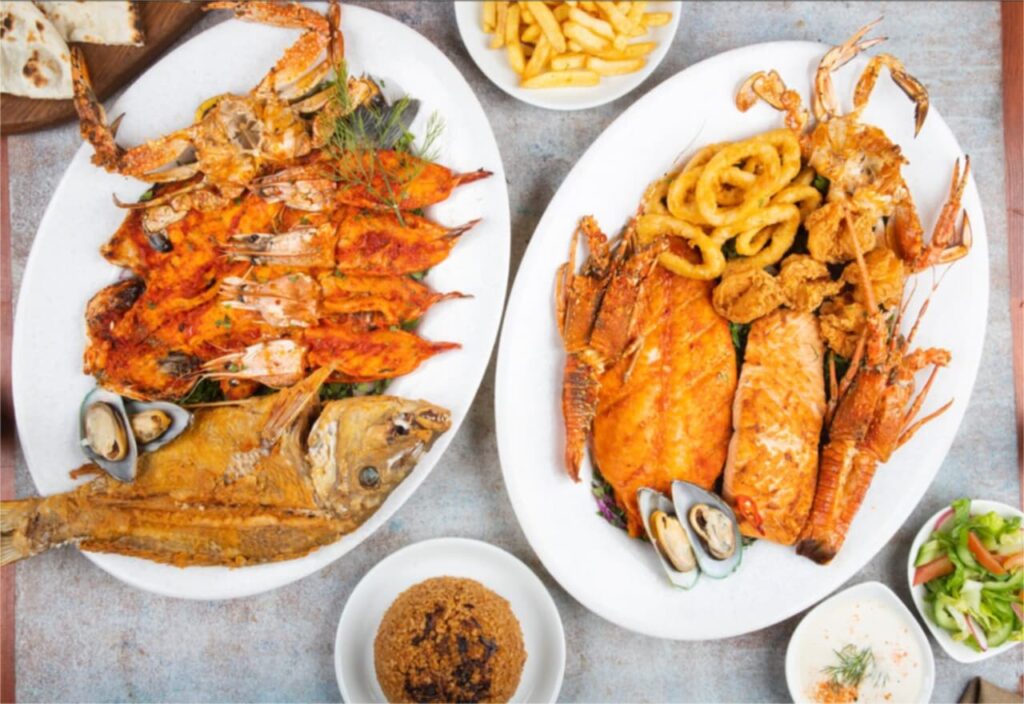Al Sayyad cuisine is a culinary tradition that has its roots in the coastal regions of Lebanon, where seafood has been a staple food for centuries. This cuisine is characterized by its rich and flavorful dishes, which are typically prepared with fresh fish, crustaceans, and shellfish, as well as a variety of herbs and spices. Al Sayyad cuisine is known for its use of simple yet bold flavors, and for its emphasis on the quality and freshness of ingredients.
Over the years, Al Sayyad cuisine has evolved and adapted to the changing tastes and preferences of the people in the region. Today, it is not only popular in Lebanon but also in other parts of the Arab world and beyond. Many restaurants and chefs around the world now offer Al Sayyad-inspired dishes, which are often a fusion of traditional and modern cooking techniques.
In this blog post, we will delve deeper into the history and culture of Al Sayyad cuisine, exploring its origins, its influence on other cuisines in the region and beyond, and the different types of dishes that are typically associated with this culinary tradition. Whether you are a food enthusiast, a fan of Lebanese cuisine, or simply curious about the cultural and culinary heritage of the Arab world, this post has something for everyone.
History
The origins of Al Sayyad cuisine can be traced back to the fishing and pearl diving communities of the Arabian Gulf, who relied on the sea for their livelihood and sustenance. These communities developed a rich culinary tradition that used fresh fish, shellfish, crustaceans, and seaweed as the main ingredients, along with rice, bread, herbs, spices, and sauces. Some of the oldest and most iconic dishes of Al Sayyad cuisine include sayadiyah (rice cooked with fish and caramelized onions), samak mashwi (grilled fish marinated in lemon and garlic), and hammour (grouper) cooked in various ways.
Evolution
Al Sayyad cuisine adapted to different influences over time, such as trade, migration, and modernization. Trade brought new ingredients and techniques from other regions, such as India, Persia, Turkey, and Europe. For example, Al Sayyad cuisine incorporated curry, saffron, turmeric, nuts, dried fruits, cheese, and yogurt into its repertoire. Migration also introduced new influences from neighboring countries, such as Oman, Bahrain, Kuwait, Saudi Arabia, Iraq, Syria, Egypt, and Morocco. For example, Al Sayyad cuisine adopted dishes such as machboos (rice with meat or fish), harees (wheat porridge with meat), tabbouleh (parsley salad), and hummus (chickpea dip). Modernization also brought new innovations and trends to Al Sayyad cuisine, such as fusion cooking, health-conscious eating, and fine dining.
Influence
Al Sayyad cuisine influenced other cuisines in the region and beyond, such as Indian, Persian, and Lebanese cuisines. For example, Al Sayyad cuisine shared its love of seafood with Indian cuisine, especially in the coastal areas of Kerala and Goa. Al Sayyad cuisine also influenced Persian cuisine with its use of rice, saffron, nuts, and dried fruits. Al Sayyad cuisine also influenced Lebanese cuisine with its use of herbs, spices, sauces, and grilled meats. Al Sayyad cuisine also spread to other parts of the world through migration and tourism, such as Europe, America, Australia, and Asia.
Al Sayyad cuisine is a rich and diverse culinary tradition that reflects the history and culture of the Emirati people. It is a cuisine that celebrates the bounty of the sea, the diversity of influences, and the creativity of chefs. If you want to experience the authentic taste of Al Sayyad cuisine in Dubai, we invite you to visit Sallet Al Sayad restaurant, where you can enjoy fresh and flavorful dishes made with quality ingredients and authentic recipes.


